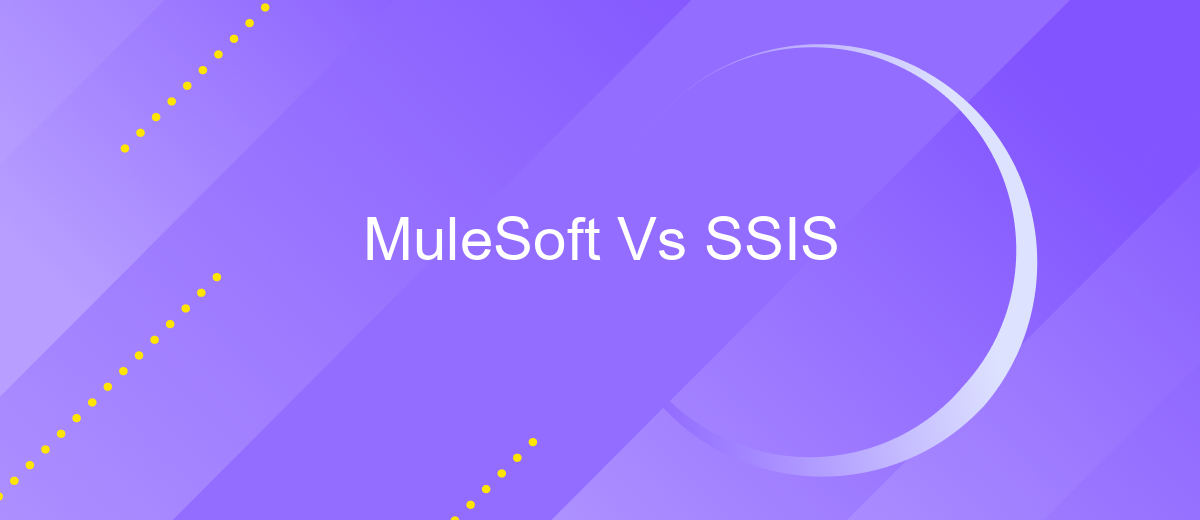MuleSoft Vs SSIS
When it comes to data integration and ETL (Extract, Transform, Load) solutions, MuleSoft and SSIS (SQL Server Integration Services) are two prominent tools that offer unique capabilities. This article aims to compare and contrast MuleSoft and SSIS, exploring their features, strengths, and potential use cases to help organizations make an informed decision on which platform best suits their needs.
Introduction
In today's fast-paced digital landscape, businesses are increasingly relying on data integration tools to streamline their operations and enhance productivity. Two prominent players in this field are MuleSoft and SSIS (SQL Server Integration Services). Both platforms offer robust solutions for integrating various data sources, but they cater to different needs and use cases.
- MuleSoft: Known for its flexibility and extensive API management capabilities, MuleSoft is ideal for complex, enterprise-level integrations.
- SSIS: A Microsoft product, SSIS excels in ETL (Extract, Transform, Load) processes and is well-suited for organizations heavily invested in the Microsoft ecosystem.
Choosing between MuleSoft and SSIS depends on various factors such as the complexity of your integration requirements, existing infrastructure, and budget. Additionally, services like ApiX-Drive can further simplify the integration process by providing user-friendly tools for connecting multiple applications and automating workflows. Understanding the strengths and limitations of each platform will help you make an informed decision that aligns with your business objectives.
Key Features Comparison

MuleSoft and SSIS are both powerful tools for data integration, but they offer distinct features that cater to different needs. MuleSoft provides a comprehensive integration platform that supports API-led connectivity, enabling organizations to connect applications, data, and devices seamlessly. Its Anypoint Platform offers a unified solution for API management, design, and deployment, making it ideal for businesses that require extensive API capabilities. Additionally, MuleSoft supports a wide range of connectors and offers robust data transformation features, ensuring seamless integration across various systems.
On the other hand, SSIS (SQL Server Integration Services) is a data integration tool from Microsoft that excels in ETL (Extract, Transform, Load) processes. It is tightly integrated with the Microsoft ecosystem, making it a preferred choice for organizations using SQL Server and other Microsoft products. SSIS provides a user-friendly interface for designing data workflows and includes a variety of built-in tasks and transformations. While it may not offer the same level of API management as MuleSoft, SSIS is a powerful tool for data migration, warehousing, and ETL operations. For businesses looking for a simpler solution to automate integrations, tools like ApiX-Drive can also be considered, providing easy-to-use connectors and automation capabilities without extensive technical expertise.
Architecture and Integration

MuleSoft and SSIS are two prominent tools for integrating various systems and data sources, but their architectures and integration capabilities differ significantly. MuleSoft, with its Anypoint Platform, offers a comprehensive integration solution that supports APIs, SaaS, and on-premises systems. It uses a microservices architecture, allowing for scalable and flexible integrations. SSIS, on the other hand, is a component of Microsoft SQL Server, primarily designed for data extraction, transformation, and loading (ETL) tasks. It operates within a more rigid, server-based architecture.
- MuleSoft Anypoint Platform: Microservices-based, supports APIs, SaaS, on-premises systems.
- SSIS: Server-based, focused on ETL processes within SQL Server environment.
- ApiX-Drive: Facilitates integration setup with a user-friendly interface, supporting various platforms.
While MuleSoft excels in providing a versatile and scalable integration platform suitable for complex environments, SSIS is ideal for organizations heavily invested in the Microsoft ecosystem needing robust ETL capabilities. ApiX-Drive can complement both by simplifying the integration process, offering a user-friendly interface to connect different platforms seamlessly, thereby enhancing overall efficiency and reducing time-to-market.
Performance and Scalability

When comparing MuleSoft and SSIS in terms of performance and scalability, it is essential to consider the specific needs of your organization. MuleSoft is renowned for its high-performance capabilities, especially in handling real-time data integration and API management. Its cloud-native architecture ensures scalability, allowing businesses to easily expand their operations without compromising performance.
On the other hand, SSIS (SQL Server Integration Services) is a robust ETL tool designed for data warehousing and batch processing. While it excels in handling large volumes of data within on-premises environments, it may face limitations in scalability when compared to cloud-based solutions like MuleSoft.
- MuleSoft: High-performance, real-time data integration, cloud-native scalability.
- SSIS: Robust ETL capabilities, excellent for on-premises data warehousing, limited scalability.
For organizations seeking to streamline their integration processes, services like ApiX-Drive can be instrumental. ApiX-Drive offers automated integration solutions that enhance performance and scalability by connecting various applications and services seamlessly. This can be particularly beneficial when using MuleSoft or SSIS, providing additional flexibility and efficiency in managing integrations.
Conclusion
In conclusion, both MuleSoft and SSIS offer robust solutions for data integration, each with its unique strengths. MuleSoft excels in providing a comprehensive, cloud-based platform that supports a wide range of connectors and APIs, making it ideal for complex, real-time integrations. On the other hand, SSIS is a powerful tool within the Microsoft ecosystem, particularly suited for ETL processes and on-premises data management. The choice between the two largely depends on the specific needs and existing infrastructure of an organization.
For businesses looking to streamline their integration processes further, services like ApiX-Drive can be invaluable. ApiX-Drive simplifies the setup of integrations by offering a user-friendly interface and a variety of pre-built connectors, enabling seamless data flow between different systems without the need for extensive coding. Whether you choose MuleSoft, SSIS, or another solution, leveraging tools like ApiX-Drive can significantly enhance the efficiency and effectiveness of your integration efforts.
- Automate the work of an online store or landing
- Empower through integration
- Don't spend money on programmers and integrators
- Save time by automating routine tasks
FAQ
What are the primary differences between MuleSoft and SSIS?
Can MuleSoft and SSIS be used together in a project?
Which tool is better for real-time data integration?
Is MuleSoft more expensive than SSIS?
What are some alternatives for integration and automation besides MuleSoft and SSIS?
Apix-Drive is a universal tool that will quickly streamline any workflow, freeing you from routine and possible financial losses. Try ApiX-Drive in action and see how useful it is for you personally. In the meantime, when you are setting up connections between systems, think about where you are investing your free time, because now you will have much more of it.


